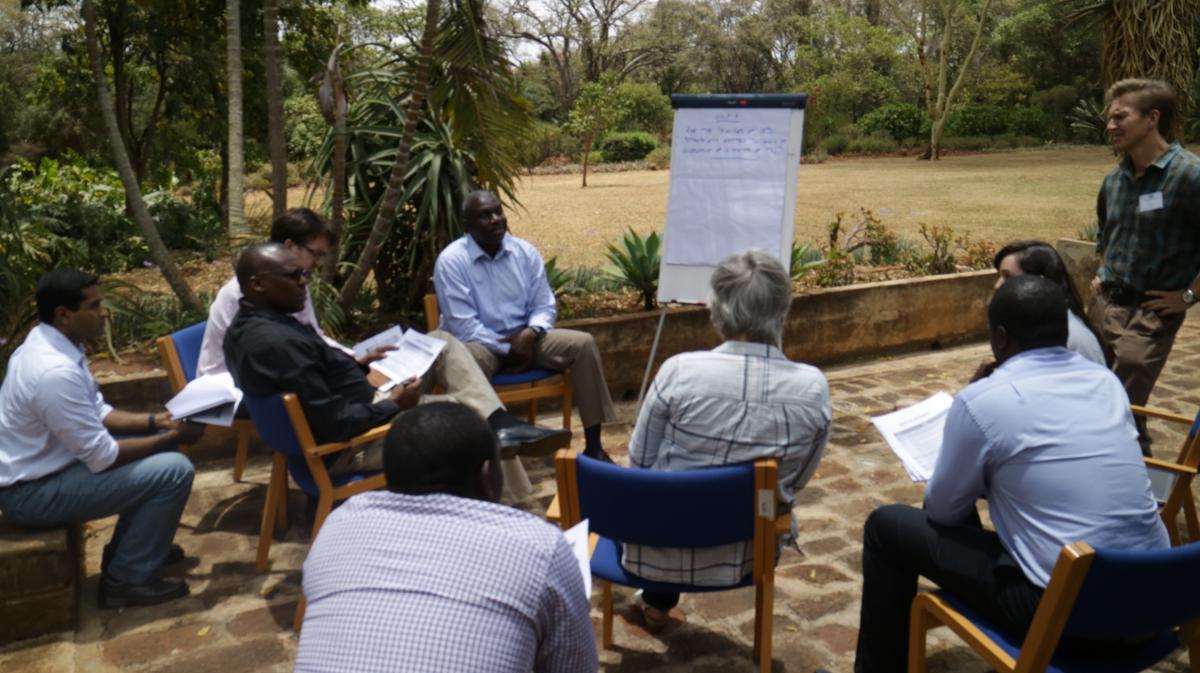Protected area governance, equity and the Green List in Kenya
An IUCN Green List workshop was co-organised by IUCN PAPACO and the IUCN Green List team in Kenya and held at the IUCN Eastern and Southern Africa Regional Office (ESARO) in Nairobi, Kenya, bringing together key actors in conservation in Kenya including the Kenya Wildlife Service and IIED.

Green List workshop in Kenya
Photo: Jennifer Kelleher/IUCN
Equity is a core issue for protected and/or conserved area (PCA) management and governance both in terms of the ethics of conservation and in terms of the effectiveness and sustainability of conservation outcomes. Equity has three distinct dimensions: recognition, procedure, and the distribution of benefits and costs and their ultimate impact on human well-being (social impacts). Governance assessment addresses all of these other than social impacts which remains the domain of social assessment. At the same time, good governance is fundamental to effective PCA design, PCA planning, and PCA management operations, and the degree to which these are equitable in terms of recognition and engagement of key actors, and the distribution of benefits and costs/burdens. Achieving both effective and equitable PCA management are now central to international PCA policy (Aichi target 11) and indeed the IUCN Green List Standard.
This workshop explored how governance and social assessments may be combined to provide a comprehensive assessment of equity in PCA conservation, and how the cross-cutting equity theme of the Green List standard might be strengthened, especially in the Kenyan context.
A key outcome of the meeting was to link the governance work of the IUCN GL Standard to other governance effectiveness tools. Phil Franks from the International Institute for Environment and Development presented the outcomes of the survey carried out in 2017 on governance approaches in Kenyan conservancies. Phil Franks also provided outcomes and lessons learnt from the four site governance assessments that were performed in four conservancies from various governance types in 2017. Other presentations included Caroline Abunge (of the Wildlife Conservation Society) shared a presentation of their research on the LMMAs on Kenyan coast and Deepali Gohil of the Northern Rangelands Trust (NRT) shared the findings of a survey that they conducted on various monitoring tools used by the conservancies in Kenya.
The idea was to show how all the work being done in Kenya in terms of PCA assessments can contribute to the GL. Indeed as the GL standards covers all the aspects of PCA performance (governance, design, management effectiveness and conservation outcomes), all of these methodologies applied in Kenya relate necessarily to certain GL criteria. Therefore PAs that would have used different methodologies can share and highlight key relevant information simply by referencing and linking it to the appropriate GL criteria.
The added value of the GL is that it covers all the aspects of PCA performances. Thus PCAs that have used specific methodologies looking at a specific aspect of the PCA can then broaden their analysis to the other component of the GL. Meanwhile, the methodologies used to look at a specific aspect of the GL, such as the IIED Governance Assessment methodology, provide an in-depth analysis and diagnosis that will help the PCA to define precisely its strengths and challenges and, to subsequently to define the appropriate solutions to address those challenges. The GL and governance tools applied in Kenya are therefore complementary to each other and the PCA can choose the one that addresses its needs in the best way. The workshop participants concluded that there is a real need for PCAs to implement governance assessment tools. This is because to these tools contribute directly to helping all stakeholders involved in the PCA to better understand the issues around effective and equitable management and, crucially how to start to practically make progress on these key issues.
Co-organising the event were Beatrice Chataigner (IUCN PAPACO), Kenya EAGL chair Nigel Hunter together with other Kenya EAGL members. The event was well attended by other IUCN staff from ESARO and the Global Protected Areas Programme.



